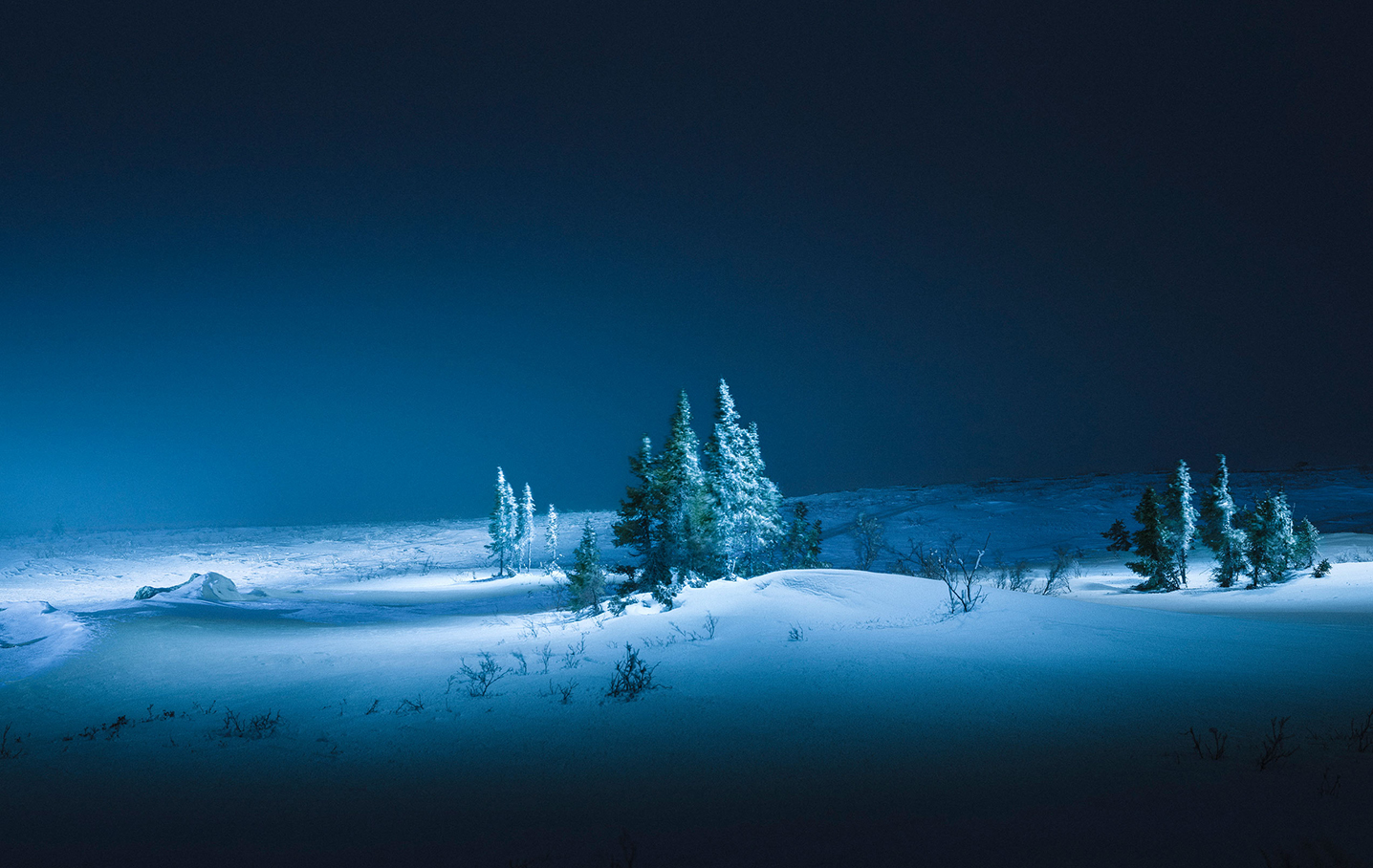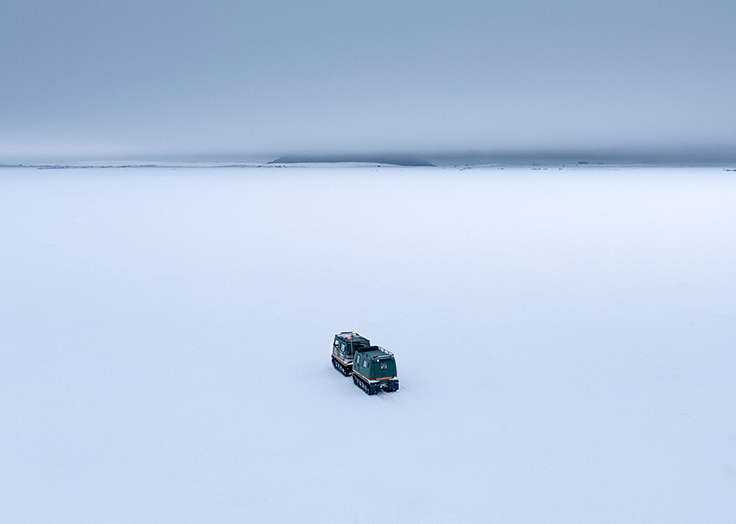Category 18 - Full Width Image
 |
Category 1 - Pull Quote
Working collaboratively to protect the unique and sensitive Arctic tundra ecosystem.
Category 3 - Three Column text
The vegetation and wildlife on the Arctic tundra command respect, thriving where temperatures range more than 70°C over the course of a single year. High above the treeline, shrubs and seeds survive the eight-month long, dark winter under a blanket of snow. Long days of endless sunshine renew the vegetation during the short, dry summer. Grizzly bears emerge from their winter slumber, where they have remained protected inside dens they have carved into ancient riverbeds (eskers), to roam the tundra in search of food and mates. Herds of caribou follow the melting snow hundreds of kilometers north in the spring, only to return south a few months later to shelter in the forest below the treeline over the winter with their newly born young in tow. Wolves are never far behind. Muskox, with their warm undercoats of qiviut, remain on the tundra through the winter, braving the icy winter winds.
Indigenous people have lived on the land where we operate for many generations, relying on the water, vegetation, and wildlife for their livelihoods.
Mountain Province Diamonds takes its responsibility to protect the land, water, and wildlife for current and future generations very seriously. We acknowledge that our operations are located on the traditional territories of local indigenous peoples, including Tłįchǫ, Dene, and Métis people. Members of local communities continue to live and hunt on the land around our projects.
Category 6 - Single Left Photo
 |
Category 7 - Three Column text
Mountain Province Diamonds collaborates with local indigenous communities to ensure we achieve the right balance between socioeconomic and environmental impacts. We work together with local communities, technical experts, and regulatory agencies to develop, review, and revise our environmental monitoring programs. We welcome community members to our project sites so they can see how we are working with the land and water on which their communities have depended for many generations. We also travel to local communities regularly so that we can share and discuss project updates and future plans to ensure we are protecting the land, water, air, vegetation, and wildlife. We share the results of our monitoring programs publicly.
We value the Traditional Knowledge of the people who have lived in balance with the Arctic ecosystem for generations and incorporate traditional ways of knowing into our environmental monitoring programs with the help of local community members.
At our Gahcho Kué mine, our commitment to collaboration has been codified in the Ni Hadi Xa Agreement, which establishes a community-led environmental monitoring program at the mine. Ni Hadi Xa, which means “People Watching the Land Together,” is responsible for conducting on-site environmental monitoring, technical reviews of environmental practices and programs, and traditional knowledge monitoring on and around the mine site. Together, we ensure that our operations have no serious impacts on local wildlife, soils, air, vegetation, or water.
We recognize the need to conserve and protect water. At our Gahcho Kué mine, 100% of the water that is used in the ore processing facility (where diamonds are retrieved from kimberlite) is recycled. This means that approximately 19 million cubic meters of freshwater that would have been required for ore processing are, instead, left untouched in the surrounding lakes and streams each year.
We work closely with community members, technical experts, and regulatory authorities to ensure that the water we release into surrounding lakes and streams is safe for fish, wildlife, and humans alike. This includes working with elders from local communities to ensure the taste of the water around the mine does not change over time.
Our wildlife monitoring programs are not only aimed at detecting potential effects related to mine operations, but also inform our understanding of the unique species that inhabit the tundra through collaborations with governmental scientists and technical experts. We collect data through our environmental programs and provide field support for scientific and Traditional Knowledge research that is being conducted by other organisations in the remote and relatively un-studied areas in which we operate.
Since 2013, Gahcho Kué has welcomed ten groups of researchers from the University of Calgary, the University of Waterloo, the University of Northern British Columbia, the Government of the Northwest Territories, and the Canadian Wildlife Service at our Gahcho Kué mine. These groups use Gahcho Kué as a base for conducting independent single and multi-year research projects in remote areas where logistical challenges and costs would otherwise act as serious barriers to research.
Mountain Province Diamonds understands that local communities – and people around the world – are concerned about climate change. Climate change is of particular concern in the Arctic where it threatens the permafrost. We are working to reduce our carbon footprint, despite the fact that we operate in very cold and remote areas of the planet.
Gahcho Kué's continued focus on reducing our carbon footprint resulted in an estimated savings of approximately 4,700 tonnes of CO2e in 2019, up from 2,000 tonnes CO2e in 2018. These savings have arisen from a variety of energy and carbon emissions reduction initiatives, from installing smart thermostats in accommodations buildings to redesigning mining plans in a way that reduces the amount of diesel fuel that will be required by mining equipment over the life of the mine.
At our Gahcho Kué mine, heat that is generated incidentally during the production of electricity is captured and used to heat many of the key buildings on site, including camp accommodations, the new employee gymnasium, and the processing facility.
Sign up to our Newsletter for the latest news and press notifications sent directly to your email.

